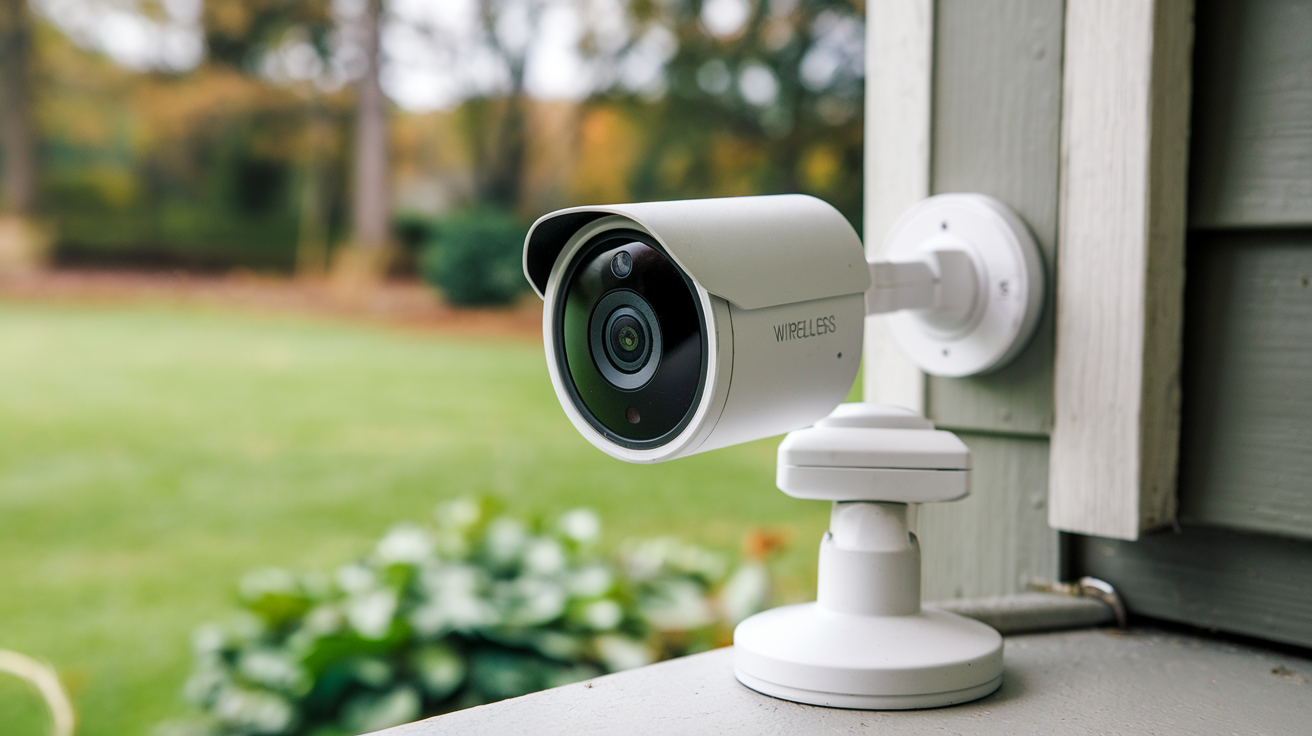Home security has evolved dramatically over the past decade, driven by rapid advancements in wireless technology, artificial intelligence (AI), and the Internet of Things (IoT). Wireless security cameras, once simple devices for recording footage, are now intelligent, interconnected systems that offer homeowners unprecedented control and peace of mind. As we look to the future, innovative features in wireless cameras are set to redefine how we protect our homes. This blog explores the cutting-edge trends and technologies shaping the next generation of home security cameras, highlighting the features to watch in 2025 and beyond.
The Rise of Wireless Security Cameras
Wireless security cameras have become a cornerstone of modern home security due to their ease of installation, flexibility, and advanced capabilities. Unlike traditional wired systems, wireless cameras eliminate the need for complex cabling, making them ideal for both homeowners and renters. They connect to Wi-Fi networks, allowing remote monitoring via smartphones or other devices, and often integrate seamlessly with smart home ecosystems like Amazon Alexa, Google Assistant, and Apple HomeKit. The global wireless home security camera market, valued at USD 9.8 billion in 2024, is projected to grow at a compound annual growth rate (CAGR) of 13.6% through 2034, driven by rising demand for smart home integration and innovative features.
As technology continues to advance, wireless cameras are becoming smarter, more efficient, and more user-friendly. Below, we dive into the most exciting features that are shaping the future of home security.
1. AI-Powered Video Analytics
Artificial intelligence is transforming wireless security cameras from passive recording devices into proactive guardians. AI-powered video analytics enable cameras to analyze footage in real-time, distinguishing between routine activities and potential threats. For example, modern cameras can differentiate between a pet wandering through the backyard and an unfamiliar person approaching the front door. This reduces false alarms and ensures homeowners are alerted only when necessary.
Facial recognition is a standout AI feature, allowing cameras to identify familiar faces, such as family members or trusted neighbors, and flag unknown individuals. Brands like Google Nest and Eufy are leading the charge, with products like the Google Nest Doorbell offering advanced facial recognition for personalized notifications. In the future, we can expect AI to become even more sophisticated, with cameras capable of predicting potential threats by analyzing behavioral patterns, such as loitering or unusual activity at odd hours.
2. 4K UHD and Beyond
Resolution is a critical factor in security camera performance, and the shift to ultra-high-definition (UHD) is a game-changer. 4K cameras, like the Reolink Argus PT 4 K+, deliver crystal-clear images, making it easier to identify details such as faces, license plates, or clothing. Some brands are already experimenting with 8K resolution, which could become mainstream in the coming years, offering unparalleled clarity for large properties or commercial spaces.
Beyond resolution, advancements in low-light and color night vision are enhancing camera performance in challenging conditions. Technologies like Reolink’s ColorX Night Vision provide vibrant, full-color footage even in near-darkness, eliminating the grainy, monochromatic images of traditional night vision. These improvements ensure that wireless cameras can deliver reliable surveillance 24/7, regardless of lighting conditions.
3. Solar-Powered and Long-Lasting Batteries
One of the biggest challenges with wireless cameras is power management, but innovative solutions are addressing this issue. Solar-powered cameras, such as the Eufy SoloCam S230, integrate built-in solar panels to keep batteries charged with minimal maintenance. A few hours of sunlight can provide continuous power, making these cameras eco-friendly and cost-effective.
For non-solar models, advances in battery technology are extending operational life. Modern cameras, like the Ring Stick Up Cam Battery, offer months of use on a single charge, with some manufacturers reporting up to a year of battery life under optimal conditions. In the future, we may see cameras with self-charging capabilities or energy-harvesting technologies that draw power from ambient sources like Wi-Fi signals or kinetic energy.
4. Seamless Smart Home Integration
The future of home security lies in interconnected ecosystems, and wireless cameras are at the heart of this trend. Today’s cameras integrate with smart home platforms, allowing users to control security systems, lights, locks, and thermostats from a single app. For example, Philips Hue Secure cameras sync with Hue lighting systems to flash lights in red or white during a security alert, deterring intruders.
Voice assistants are also playing a bigger role. Cameras like the Arlo Pro 5S 2K Spotlight work with Alexa, Google Assistant, and HomeKit, enabling voice-activated monitoring and control. Looking ahead, cross-platform compatibility will become standard, with cameras operating seamlessly across multiple ecosystems. This will create unified smart home experiences where security, lighting, and climate control work in harmony.
5. Autonomous and Mobile Cameras
A groundbreaking trend is the development of autonomous wireless cameras that can move independently to cover larger areas. The Eufy S330, for instance, is an LTE-enabled camera with a 360-degree field of vision and AI-driven tracking, allowing it to follow subjects across expansive properties. These cameras are ideal for monitoring dynamic environments, such as large yards or multi-room homes.
In the future, we may see drones or robotic cameras patrolling properties, equipped with AI to navigate obstacles and respond to threats in real-time. These mobile cameras could integrate with other security devices, such as smart locks or alarms, to create a fully autonomous security network.
6. Hidden Cameras in Everyday Devices
Discreet surveillance is gaining traction, with hidden cameras embedded in everyday objects like streaming devices, light bulbs, or doorbells. The Roku Ultra Dolby HDR Streaming Player, for example, doubles as a 4K UHD security camera, blending entertainment and security without drawing attention. These hidden cameras are tamper-resistant and ideal for catching intruders off guard.
As privacy concerns grow, manufacturers are prioritizing secure data storage and encryption to protect footage from unauthorized access. Hidden cameras will likely become more common, offering homeowners subtle yet powerful surveillance options.
7. Local and Cloud Storage Options
Storage is a critical consideration for wireless cameras, and the future offers flexible solutions. Many cameras, like the Eufy Indoor Cam S350, support local storage via microSD cards, eliminating the need for costly subscriptions. Others, like the Ring Stick Up Cam, offer affordable cloud storage plans, such as Ring Protect Basic at $5/month for 180 days of video.
Hybrid storage models are emerging, allowing users to store footage locally for quick access and back it up to the cloud for added security. As cloud services become more affordable and secure, we can expect greater adoption, with AI-driven analytics organizing and prioritizing footage for easy retrieval.
8. Enhanced Privacy and Cybersecurity
With increased connectivity comes the risk of cyberattacks, and manufacturers are addressing this with robust security features. Encryption, two-factor authentication, and regular software updates are becoming standard. Cameras like the Reolink E1 Pro prioritize data security, earning strong scores in Consumer Reports’ tests.
Privacy-focused features, such as Eufy’s privacy mode, which physically redirects the camera lens away from the monitored area, are also gaining popularity. In the future, regulatory frameworks like GDPR and CCPA will drive stricter standards, ensuring that home security companies prioritize consumer privacy.
The Road Ahead
The future of home security is bright, with wireless cameras leading the charge. From AI-powered analytics and 4K resolution to solar power and autonomous mobility, these devices are becoming smarter, more efficient, and more integrated than ever before. As the market continues to grow, homeowners can expect greater customization, seamless smart home connectivity, and enhanced privacy protections.
To stay ahead, consider investing in cameras from reputable brands like Reolink, Eufy, Arlo, or Ring, which consistently push the boundaries of innovation. Whether you’re monitoring your front porch, keeping an eye on pets, or securing a large property, the next generation of wireless cameras offers solutions for every need. Embrace these cutting-edge features, and transform your home into a safer, smarter sanctuary.
Feel safe with the Home Security that you will get from professional security companies are as follows; Contact us at (888) 805-5456 to speak to a specialist and get a no-obligation quote.


